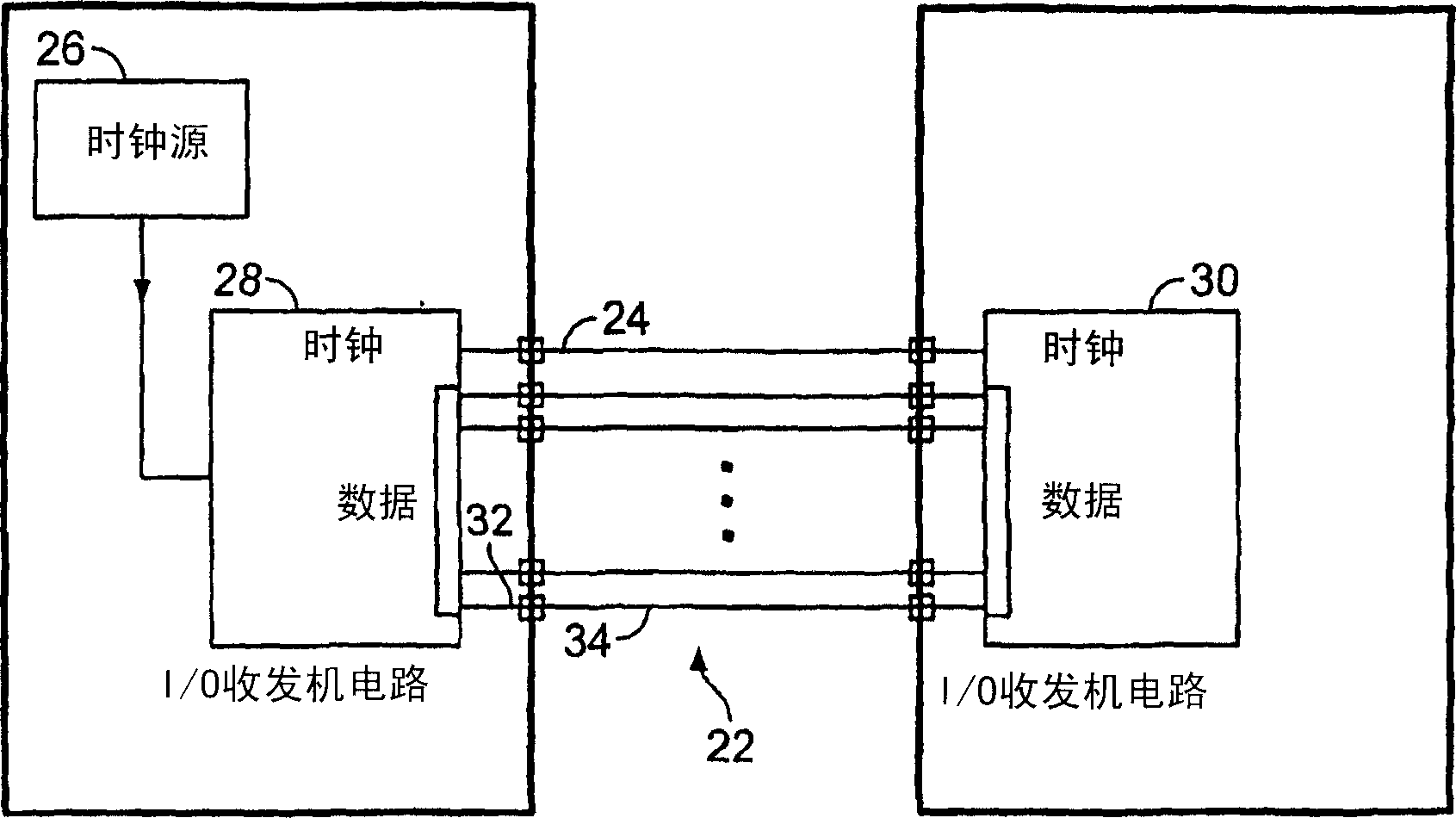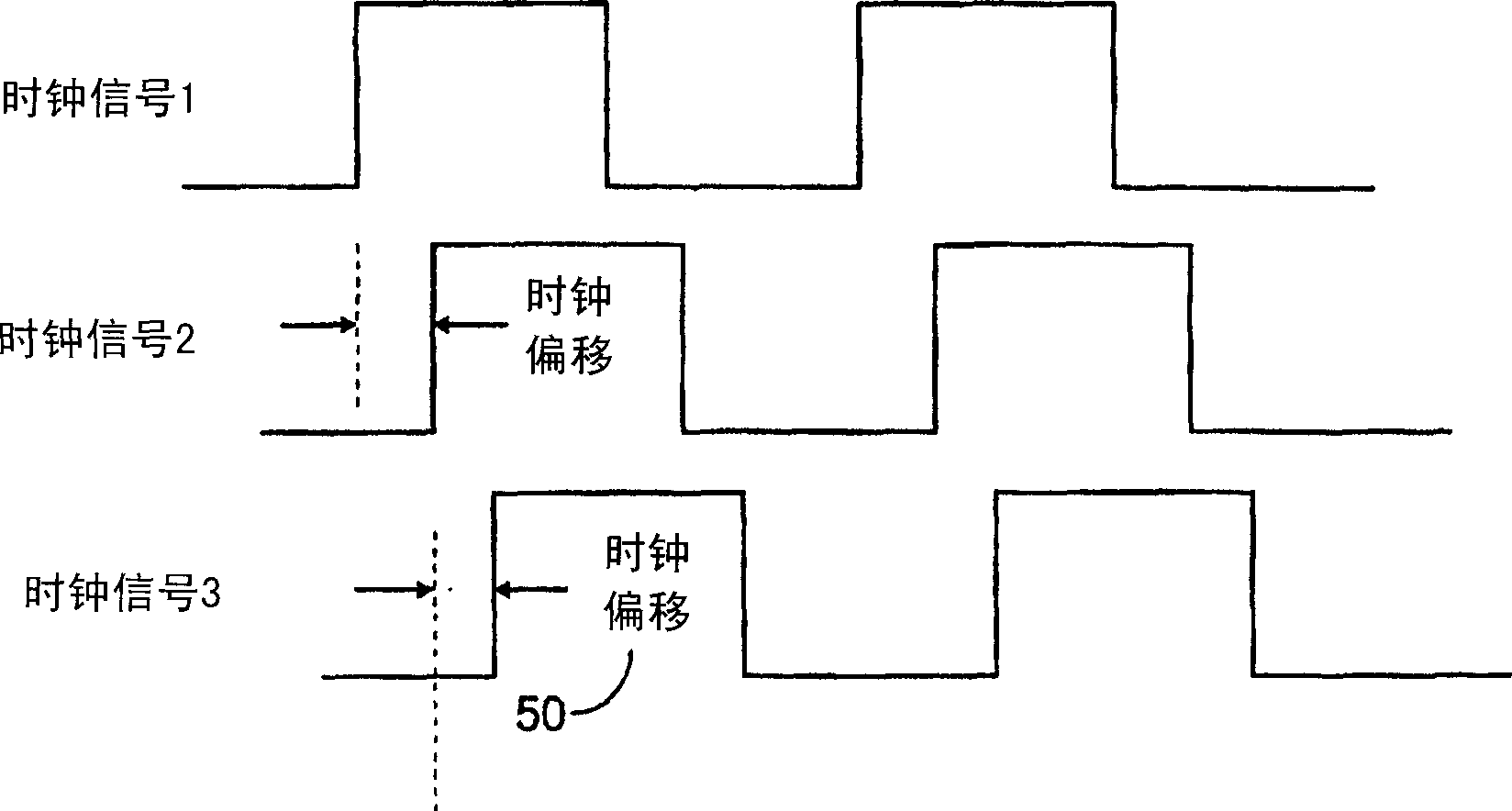Signaling with multiple clock lines
A signal and reference time technology, applied in the direction of synchronous information channel, line failure/interference reduction, digital transmission system, etc., can solve problems such as high cost, cost of increasing power and circuit board wiring space, limiting channel throughput, etc.
- Summary
- Abstract
- Description
- Claims
- Application Information
AI Technical Summary
Problems solved by technology
Method used
Image
Examples
Embodiment Construction
[0028] Multiple time reference signals (clocks) can be used to improve the timing resolution of eg phase and pulse width modulated signals. Such as image 3 As shown, clock signals can be derived from the same source, but the clock signals are phase shifted with respect to each other by a pre-designed amount 50. The modulator circuit can then reference the data transition to the clock signal whose edge is closest to the transition. Because there are more clock transitions, the time interval from a data signal transition to the nearest clock transition can be reduced. The integral of jitter, which increases with the event distance between a data transition and its reference clock transition, will also decrease, resulting in an overall reduction in circuit jitter. This results in a higher available bandwidth. In some embodiments, the addition of more than one clock signal may require sacrificing a considerable data line for each additional clock signal due to wire routing con...
PUM
 Login to View More
Login to View More Abstract
Description
Claims
Application Information
 Login to View More
Login to View More - R&D
- Intellectual Property
- Life Sciences
- Materials
- Tech Scout
- Unparalleled Data Quality
- Higher Quality Content
- 60% Fewer Hallucinations
Browse by: Latest US Patents, China's latest patents, Technical Efficacy Thesaurus, Application Domain, Technology Topic, Popular Technical Reports.
© 2025 PatSnap. All rights reserved.Legal|Privacy policy|Modern Slavery Act Transparency Statement|Sitemap|About US| Contact US: help@patsnap.com



